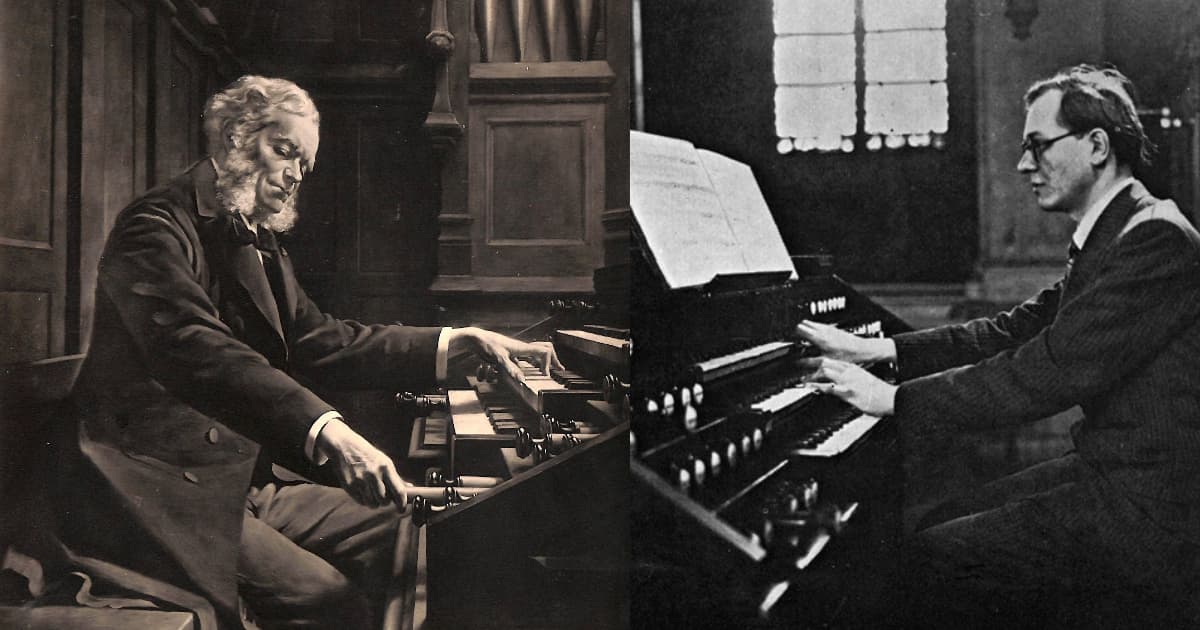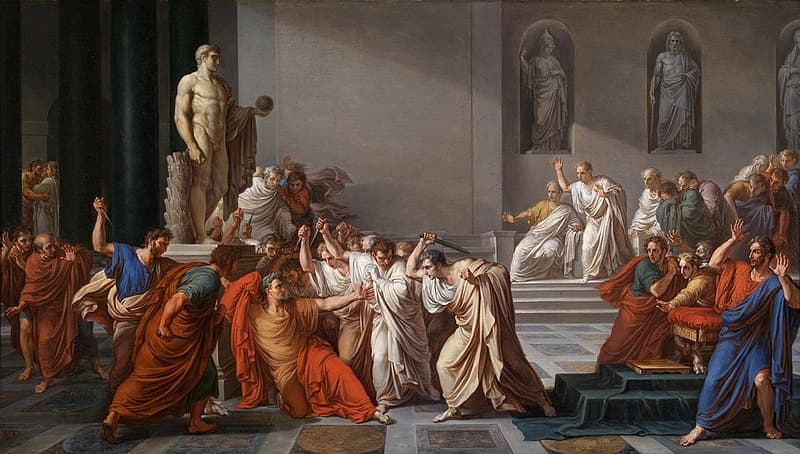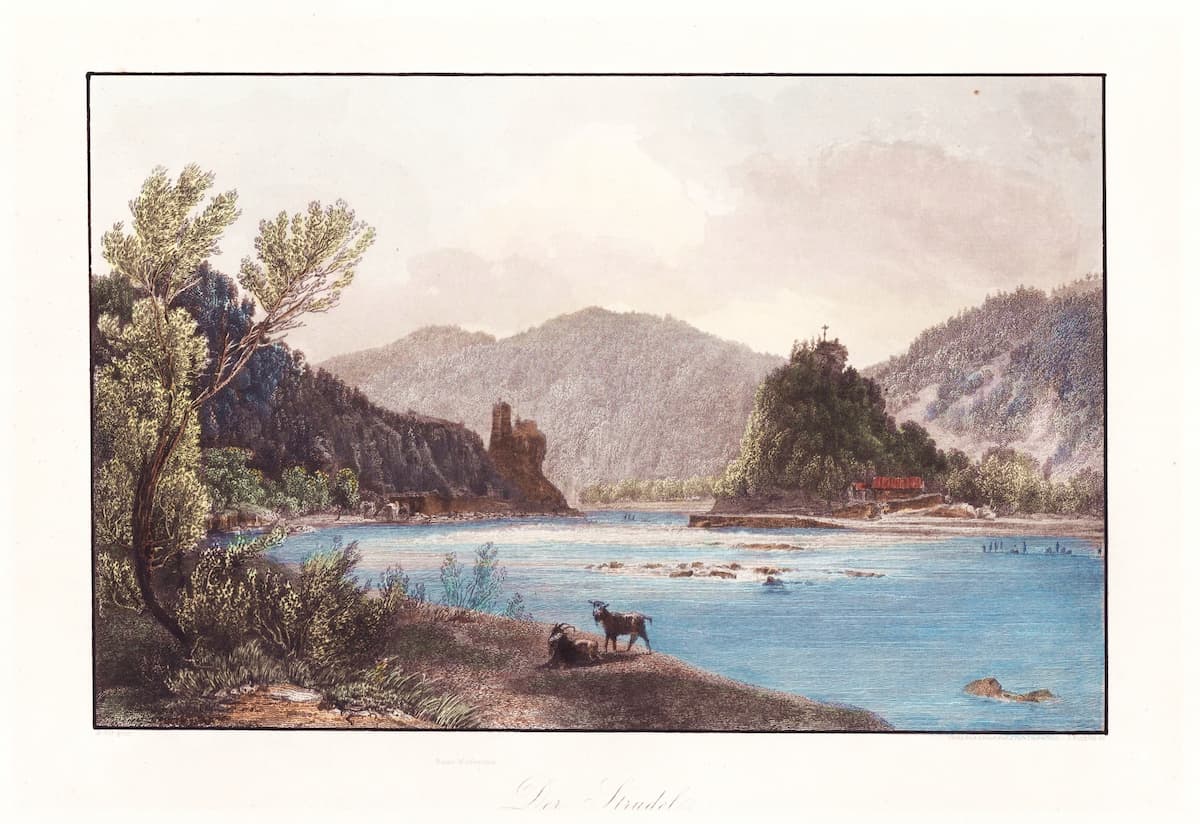Today was the birthday of César Franck (1822-1890) and Olivier Messiaen (1908- 1992). Born in different places and centuries, Franck and Messiaen did not share the same soundscapes in their compositions. Yet, these two composers shared a few things in common that influenced their lives and compositions.
Paris Conservatoire

César Franck and Olivier Messiaen
Both Franck and Messiaen studied and worked at the Paris Conservatoire. César Franck was born in Belgium, but he and his younger brother Joseph were sent to Paris at a young age. They entered the Conservatoire in 1837, where César Franck studied piano under Pierre Zimmerman, composition with Aimé Leborn, and organ with François Benoist.
Even though Franck took “retirement” from his study at Paris Conservatoire, he later succeeded Benoist’s position as professor of organ in 1872. His popularity among his students earned him a nickname, Père Franck, “Father Franck.” His students included Vincent d’Indy, Ernest Chausson, Louis Vierne, Henri Duparc, and Gabriel Pierné (who was awarded the Prix de Rome and later succeeded Franck’s position as the church organist at Ste Clotilde).
Olivier Messiaen was born in Avignon, France. Same as César Franck, Messiaen was the elder brother of the family. He entered the Paris Conservatoire in 1919 when he was only 11 years old, with teachers including Jean Gallon, Maurice Emmanuel, Marcel Dupré, Charles-Marie Widor, and Paul Dukas.
Messiaen was drafted to serve the French army during the Second World War. When the war was over, Messiaen was appointed a professor of harmony at the Paris Conservatoire. He held the position until 1978 when he retired. His students who studied with him at the Conservatoire included Pierre Boulez (1925-2016), Iannis Xenakis (1922-2001), Karlheinz Stockhausen (1928-2007), Quincy Jones (1933-), Tristan Murail (1947-).
Olivier Messiaen: Quatuor pour la fin du temps
(performed by Alan Gilbert, violin; Carter Brey, cello; Anthony McGill, clarinet; and Inon Barnatan, piano)
Quatuor pour la fin du temps (Quartet for the End of Time) was an eight-movement piece written during Messiaen’s internment in a German prisoner-of-war camp. It was inspired by texts from the Book of Revelation. The work premiered in 1941, and Messiaen played with clarinetist Henri Akoka, violinist Jean le Boulaire, and cellist Étienne Pasquier, who were prisoners that Messiaen met in the camp.
Church organists
Another thing in common between Franck and Messiaen is that they were church organists. Franck held the position of resident organist at Notre-Dame-de-Lorette (1847) and Saint-Jean-Saint-François-du-Marais (1851). In 1857, he became the organist and maître de chapelle at Sainte-Clotilde (1857), where he remained his position until his death.
César Franck: Andantino in G-minor for Organ, CFF 54
(performed by organist Pétur Sakari)
Andantino in G-minor was written in 1858 for the three manual organs built by Cavaillé-Coll in 1948
César Franck: Grande Pièce Symphonique, Op.17, FWV 29
(performed by Konstantin Volostnov)
Grande Pièce Symphonique, was written in 1860–62. Dedicated to the composer Charles-Valentin Alkan, this work is the most significant piece from Six Pièces pour Grand Orgue. Along with his Prélude, Fugue et Variation, op. 18, Grande Pièce Symphonique was influential to the French organ literature.
Compared to Franck, Messiaen only held his position as titular organist at one place, the Église de la Sainte-Trinité. He was appointed in 1930 and remained to serve there for 61 years.
Olivier Messiaen: Les corps glorieux, sept visions brèves de la vie des ressuscités (1939)
(Performed by Louis Thiry (1935-2019))
Les Corps Glorieux is one of the three early organ cycles of the composer (the other two are with L’Ascension (1934) and La Nativité du Seigneur (1935)). It was completed a week before the declaration of the Second World War. Featuring both Indian classical music and Gregorian chant, Messiaen premiered the piece in 1945.
Faith
Franck and Messiaen both served as organists and were devout Catholics throughout their lives. Their beliefs are reflected in their music. For example, one of Franck’s last compositions, an oratorio Les Beatitudes, was based on a section of Christ’s Sermon on the Mount. Completed in 1879, this almost two-hour-long work did not premiere until after Franck’s death.
César Franck: Les Beatitudes
Franck’s setting of Panis Angelicus is another of his best-known works. Panis Angelicus was initially taken from St. Thomas Aquinas’ Sacris Solemniis before 1274. Franck originally wrote it for tenor with organ and string accompaniment, but it has also been arranged for other voices and instrumental combinations.
César Franck: Panis Angelicus – King’s College, Cambridge
Messiaen also wrote works featuring or based on biblical and theological sources, including Livre du Saint Sacrement (“Book of the Holy Sacrament”). It is a collection of 18 movements for organ, based on the Eucharist. Composed in 1984 and completed in 1985, the work gave its first performance in 1986.
Olivier Messiaen: Livre du saint sacrament: 18. Offrande et Alleluia final
Legacy
Without a doubt, Franck and Messiaen were both influential in music history. Their unique styles of composition paved the way for contemporary musicians and the next generations. Franck is considered the greatest composer of organ music after Bach, whose works were some of the finest organ pieces and the groundwork for the French symphonic organ style. As a pianist, I am always drawn to his works’ beautiful melodies and harmonies, including his Prélude, Fugue et Variation, Op. 18.
César Franck: Prélude, Fugue et Variation op. 18 (Anne-Isabelle de Parcevaux, organ)
Messiaen’s unique approach to harmony, rhythm, and melody created a new soundscape that sounds “futuristic” to many of our ears. While his music compositions that imitate birds’ calls are well discussed, he was also an explorer of Hindu rhythms and Japanese musical styles. For example, Sept haïkaï — esquisses japonaises (Seven Haiku: Japanese Sketches) for piano and small orchestra was influenced by different sounds, including Indian rhythms, Gagaku, the music of the Noh theatre, and the birdcalls of Japan. It was composed in 1962 after his honeymoon with his new second wife, Yvonne Loriod. Boulez conducted the premiere of the suite on October 30, 1963, with Loriod performing as the piano soloist at Domaine Musical.
Olivier Messiaen: Sept haïkaï, esquisses japonaises pour piano solo et petit orchestre
There are few recent albums featuring the works by these two legendary composers. A few months ago, French pianist Ingmar Lazar released an album featuring four sets of pieces by César Franck.
Danish-Swedish pianist Morten Heide, whose album features the 20 movements of Vingt Regards sur l Enfant-Jésus (Twenty Contemplations on the Infant Jesus), will be coming out on December 10.
While December 10th was the birthday of César Franck and Olivier Messiaen, it was also the birthday of some musicians and composers, including Alexander Courage, an American arranger and composer best known for the original Star Trek series theme music.
For more of the best in classical music, sign up for our E-Newsletter


